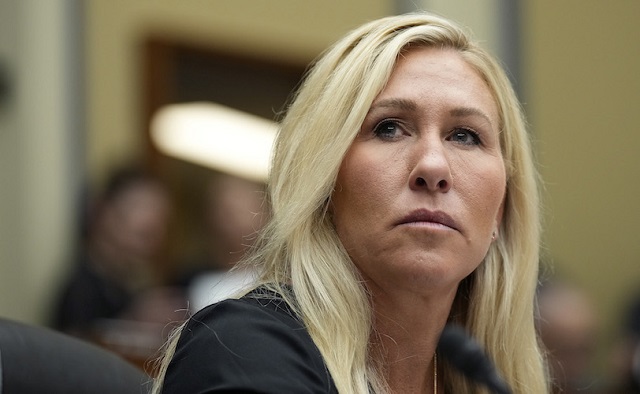National
Canadian twins Chase and Sydney Brown set to make American college football history

They were born together, they grew up together and attend the same American university.
Next week, Canadians Chase and Sydney Brown will make U.S. college football history together.
The Browns, identical twins from London, Ont., will represent Illinois at the Big Ten media days Tuesday and Wednesday at Lucas Oil Stadium in Indianapolis. It’s reportedly the first time in U.S. college football history that twins will participate in a media day event together.
Illinois’ session is scheduled for Wednesday.
“Sydney and I always dreamt about playing college ball together and that’s been the story since the start,” Chase Brown told The Canadian Press in a telephone interview. “A couple of days ago we looked back and reflected on our path to where we are right now.
“We recalled a time when we were at our mom’s place looking out at local high school in London watching homecoming games and thinking we couldn’t wait to play high school football and be like those guys . . . and here we are now. This is a terrific opportunity to represent the great men and players who’ve been part of this program and the university at such a high level . . . it’s one we’re looking forward to and ready for.”
The brothers were significant contributors last season for Illinois (5-7 overall record, 4-5 in the Big Ten) in Bret Bielema’s first season as head coach.
Chase Brown, a five-foot-11, 205-pound running back, was the Big Ten’s third-leading rusher (1,005 yards on 170 carries, 5.9-yard average) with five touchdowns. He added 14 catches for 142 yards (10.1-yard average) and was named to the All Big 10 third team.
Sydney Brown, a six-foot, 200-pound defensive back, is a four-year starter at the school with 262 tackles and four interceptions in 38 career starts. He was an All-Big Ten honorable mention last season after registering 81 tackles (team-high 50 solo).
This week, Chase Brown was added to the watch list for both the Maxwell Award for college player of the year and Doak Walker Award for top running back. He was also on last year’s Walker list.
A second straight 1,000-yard season would enhance Chase Brown’s childhood dream of one day playing in the NFL. And he’s looking forward to being a part of first-year offensive co-ordinator/quarterback coach Barry Lunny Jr.’s gameplan.
“His offence is a lot faster, we’re spread out more and we’re going to get a lot of playmakers the ball as well,” Brown said. “That’s going to be exciting to watch and I’m glad to be a part of it.
“But I’m not going to change the way I play. I’m going to go hard no matter what every single time I get an opportunity on the field . . . if I do that, then everything else will fall into place.”
While an NFL career remains a priority for Brown, he’s keeping the door open on a possible return to Canada.
“My goal since I I was a child was to play pro football,” he said. “I grew up watching Canadian football, I played it in high school and I’m not opposed to that idea at all.
“I’m not in control of where I go. The only thing I control right now is the work I put in and the production I have on the field . . . that’s what I have to focus on.”
The Browns began their high school careers in London before moving to Bradenton, Fla., and helping St. Stephen’s Episcopal School win consecutive Sunshine State Athletic Conference titles. Chase Brown originally enrolled at Western Michigan because of its aviation program before rejoining his brother at Illinois.
There’s precious little physically that distinguishes the two, who both wear their hair in a bun. Sydney Brown is slightly bigger but Chase Brown is the older of the two, by about two minutes. In full gear, the only way to tell them apart on the field is by their numbers — Chase Brown wears No. 2 while Sydney Brown dons No. 30.
If the Browns graduate to the pro ranks. they’ll very likely be on different teams, something Chase Brown said he and his brother fully understand.
“Obviously we don’t choose where we go at the next level,” Brown said. “A lot of it has to do with how we play and what teams are interested.
“But we’ve done so much here together that we’ll be able to reflect upon it together in the future, so we’re good.”
This season, the Browns will again be carrying the torch for young football players north of the border, providing more evidence Canadians can play in the NCAA.
“Canada is often overlooked for football,” Brown said. “I just hope we can motivate more Canadians to make the move and just know it’s not impossible to get down and play at a Power Five school.
“But this doesn’t come without sacrifice, it takes a lot of hard work. As long as you learn to put in the work, it’s not impossible to do.”
Illinois is slated to open its ’22 season hosting Wyoming on Aug. 27. And Brown, for one, isn’t resting upon his laurels.
“We’re really confident in what we have and we’re just looking forward to putting it on the field,” he said. “We just have to dominate every single week, be the best players we can be on the field, the best people we can in the community and leave Champagne, Ill., feeling good and like we left this university in a better place than when we came in.”
This report by The Canadian Press was first published July 20, 2022.
Dan Ralph, The Canadian Press
Business
The world is no longer buying a transition to “something else” without defining what that is

From Resource Works
Even Bill Gates has shifted his stance, acknowledging that renewables alone can’t sustain a modern energy system — a reality still driving decisions in Canada.
You know the world has shifted when the New York Times, long a pulpit for hydrocarbon shame, starts publishing passages like this:
“Changes in policy matter, but the shift is also guided by the practical lessons that companies, governments and societies have learned about the difficulties in shifting from a world that runs on fossil fuels to something else.”
For years, the Times and much of the English-language press clung to a comfortable catechism: 100 per cent renewables were just around the corner, the end of hydrocarbons was preordained, and anyone who pointed to physics or economics was treated as some combination of backward, compromised or dangerous. But now the evidence has grown too big to ignore.
Across Europe, the retreat to energy realism is unmistakable. TotalEnergies is spending €5.1 billion on gas-fired plants in Britain, Italy, France, Ireland and the Netherlands because wind and solar can’t meet demand on their own. Shell is walking away from marquee offshore wind projects because the economics do not work. Italy and Greece are fast-tracking new gas development after years of prohibitions. Europe is rediscovering what modern economies require: firm, dispatchable power and secure domestic supply.
Meanwhile, Canada continues to tell itself a different story — and British Columbia most of all.
A new Fraser Institute study from Jock Finlayson and Karen Graham uses Statistics Canada’s own environmental goods and services and clean-tech accounts to quantify what Canada’s “clean economy” actually is, not what political speeches claim it could be.
The numbers are clear:
- The clean economy is 3.0–3.6 per cent of GDP.
- It accounts for about 2 per cent of employment.
- It has grown, but not faster than the economy overall.
- And its two largest components are hydroelectricity and waste management — mature legacy sectors, not shiny new clean-tech champions.
Despite $158 billion in federal “green” spending since 2014, Canada’s clean economy has not become the unstoppable engine of prosperity that policymakers have promised. Finlayson and Graham’s analysis casts serious doubt on the explosive-growth scenarios embraced by many politicians and commentators.
What’s striking is how mainstream this realism has become. Even Bill Gates, whose philanthropic footprint helped popularize much of the early clean-tech optimism, now says bluntly that the world had “no chance” of hitting its climate targets on the backs of renewables alone. His message is simple: the system is too big, the physics too hard, and the intermittency problem too unforgiving. Wind and solar will grow, but without firm power — nuclear, natural gas with carbon management, next-generation grid technologies — the transition collapses under its own weight. When the world’s most influential climate philanthropist says the story we’ve been sold isn’t technically possible, it should give policymakers pause.
And this is where the British Columbia story becomes astonishing.
It would be one thing if the result was dramatic reductions in emissions. The provincial government remains locked into the CleanBC architecture despite a record of consistently missed targets.
Since the staunchest defenders of CleanBC are not much bothered by the lack of meaningful GHG reductions, a reasonable person is left wondering whether there is some other motivation. Meanwhile, Victoria’s own numbers a couple of years ago projected an annual GDP hit of courtesy CleanBC of roughly $11 billion.
But here is the part that would make any objective analyst blink: when I recently flagged my interest in presenting my research to the CleanBC review panel, I discovered that the “reviewers” were, in fact, two of the key architects of the very program being reviewed. They were effectively asked to judge their own work.
You can imagine what they told us.
What I saw in that room was not an evidence-driven assessment of performance. It was a high-handed, fact-light defence of an ideological commitment. When we presented data showing that doctrinaire renewables-only thinking was failing both the economy and the environment, the reception was dismissive and incurious. It was the opposite of what a serious policy review looks like.
Meanwhile our hydro-based electricity system is facing historic challenges: long term droughts, soaring demand, unanswered questions about how growth will be powered especially in the crucial Northwest BC region, and continuing insistence that providers of reliable and relatively clean natural gas are to be frustrated at every turn.
Elsewhere, the price of change increasingly includes being able to explain how you were going to accomplish the things that you promise.
And yes — in some places it will take time for the tide of energy unreality to recede. But that doesn’t mean we shouldn’t be improving our systems, reducing emissions, and investing in technologies that genuinely work. It simply means we must stop pretending politics can overrule physics.
Europe has learned this lesson the hard way. Global energy companies are reorganizing around a 50-50 world of firm natural gas and renewables — the model many experts have been signalling for years. Even the New York Times now describes this shift with a note of astonishment.
British Columbia, meanwhile, remains committed to its own storyline even as the ground shifts beneath it. This isn’t about who wins the argument — it’s about government staying locked on its most basic duty: safeguarding the incomes and stability of the families who depend on a functioning energy system.
Resource Works News
Business
High-speed rail between Toronto and Quebec City a costly boondoggle for Canadian taxpayers

“It’s a good a bet that high-speed rail between Toronto and Quebec City isn’t even among the top 1,000 priorities for most Canadians.”
The Canadian Taxpayers Federation is criticizing Prime Minister Mark Carney for borrowing billions more for high-speed rail between Toronto and Quebec City.
“Canadians need help paying for basics, they don’t need another massive bill from the government for a project that only benefits one corner of the country,” said Franco Terrazzano, CTF Federal Director. “It’s a good a bet that high-speed rail between Toronto and Quebec City isn’t even among the top 1,000 priorities for most Canadians.
“High-speed rail will be another costly taxpayer boondoggle.”
The federal government announced today that the first portion of the high-speed rail line will be built between Ottawa and Montreal with constructing starting in 2029. The entire high-speed rail line is expected to go between Toronto and Quebec City.
The federal Crown corporation tasked with overseeing the project “estimated that the full line will cost between $60 billion and $90 billion, which would be funded by a mix of government money and private investment,” the Globe and Mail reported.
The government already owns a railway company, VIA Rail. The government gave VIA Rail $1.9 billion over the last five years to cover its operating losses, according to the Crown corporation’s annual report.
The federal government is borrowing about $78 billion this year. The federal debt will reach $1.35 trillion by the end of this year. Debt interest charges will cost taxpayers $55.6 billion this year, which is more than the federal government will send to the provinces in health transfers ($54.7 billion) or collect through the GST ($54.4 billion).
“The government is up to its eyeballs in debt and is already spending hundreds of millions of dollars bailing out its current train company, the last thing taxpayers need is to pay higher debt interest charges for a new government train boondoggle,” Terrazzano said. “Instead of borrowing billions more for pet projects, Carney needs to focus on making life more affordable and paying down the debt.”
-

 COVID-192 days ago
COVID-192 days agoTrump DOJ seeks to quash Pfizer whistleblower’s lawsuit over COVID shots
-

 Crime2 days ago
Crime2 days agoU.S. seizes Cuba-bound ship with illicit Iranian oil history
-

 International2 days ago
International2 days agoMarjorie Taylor Greene’s ’60 Minutes’ interview reveals power struggle between populists and RINOs
-

 Business1 day ago
Business1 day agoAlbertans give most on average but Canadian generosity hits lowest point in 20 years
-

 Daily Caller2 days ago
Daily Caller2 days agoUS Supreme Court Has Chance To End Climate Lawfare
-

 Censorship Industrial Complex1 day ago
Censorship Industrial Complex1 day agoOttawa’s New Hate Law Goes Too Far
-

 Bruce Dowbiggin1 day ago
Bruce Dowbiggin1 day agoCarney Hears A Who: Here Comes The Grinch
-

 National1 day ago
National1 day agoCanada’s free speech record is cracking under pressure







